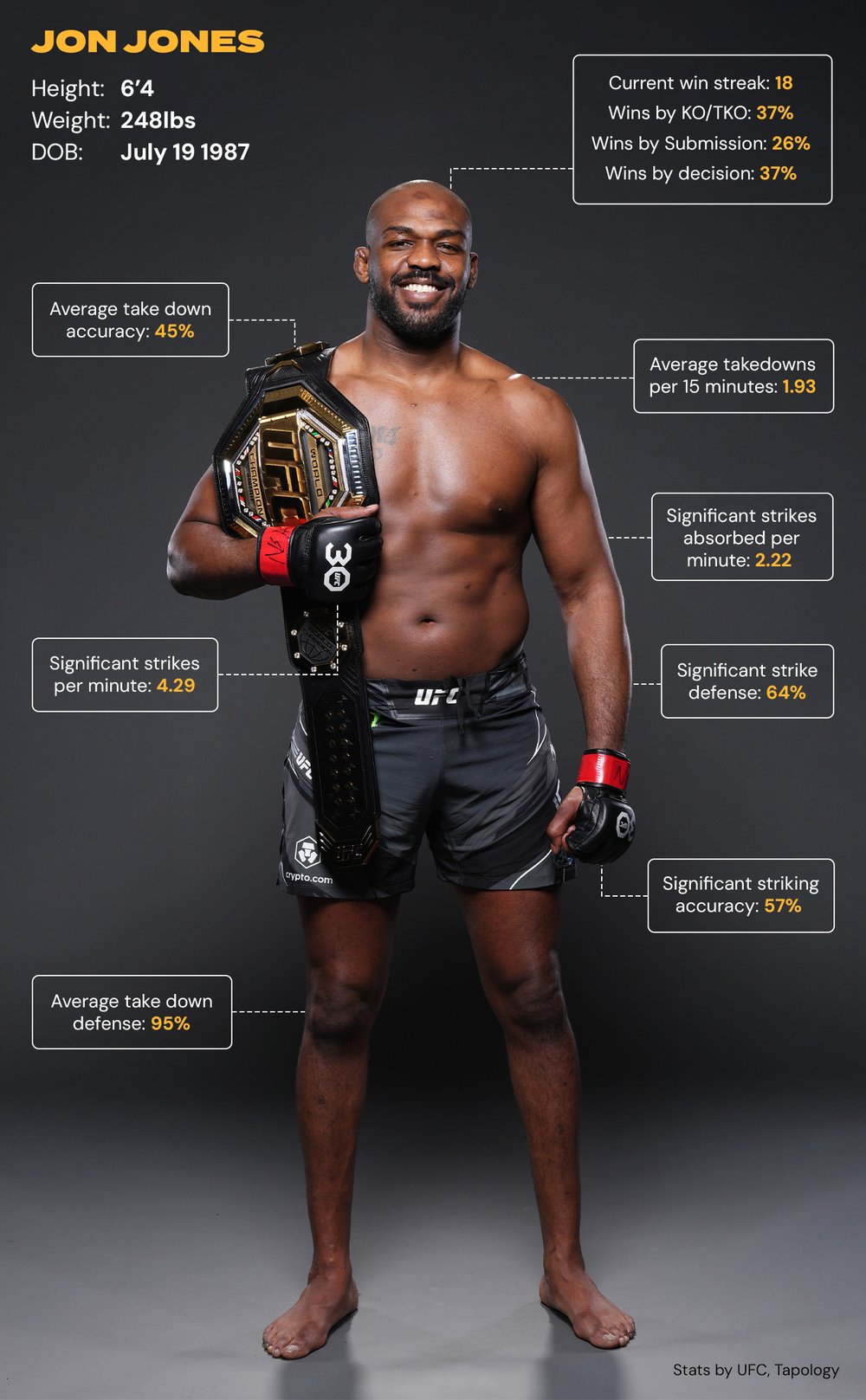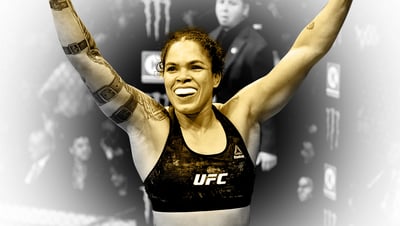
Issue 210
October 2024
Ray Klerck explores how Jon Jones’s legacy isn’t just about titles—it’s about evolving all of MMA through tactical brilliance and a relentless progression that’s shaped the sport
We love MMA because it’s an unpredictable canvas of chaos and creativity, and Jon Jones stands in the center as its Picasso King. He’s always put the art into mixed martial arts and has become the brilliant, controversial, and possibly most influential creative to step into the Octagon. When you think you’ve got him sussed, he rolls out something completely unexpected, highlighting the true nature of an ever-evolving warrior. He didn’t achieve GOAT status by etching out wins but by rewriting the rules of engagement, which has produced a career that’s become a thrilling mix of mastery and mayhem. On November 17, he will defend his heavyweight title against Stipe Miocic at UFC 309, a bout every fan hopes won’t be his final masterpiece. Dana White, who is never one to shy away from big statements, has repeatedly called Jones the greatest ever, placing him as the centerpiece of his MMA Mount Rushmore. This inexplicably enraged some fans (probably new ones), but maybe, just maybe, White’s hyperbole is actually underselling it. When you do a deep dive into Jones’s career, you don’t just see the victories. Instead, there’s a systematic dismantling of his opposition with a sadistic efficiency that makes him a terrorist of winning. As we break down his style, tactics, and mindset, it becomes clear why Jones isn’t just a fighter—he’s a blueprint for future champions. Can he do any more to gain the respect he deserves? Probably not.
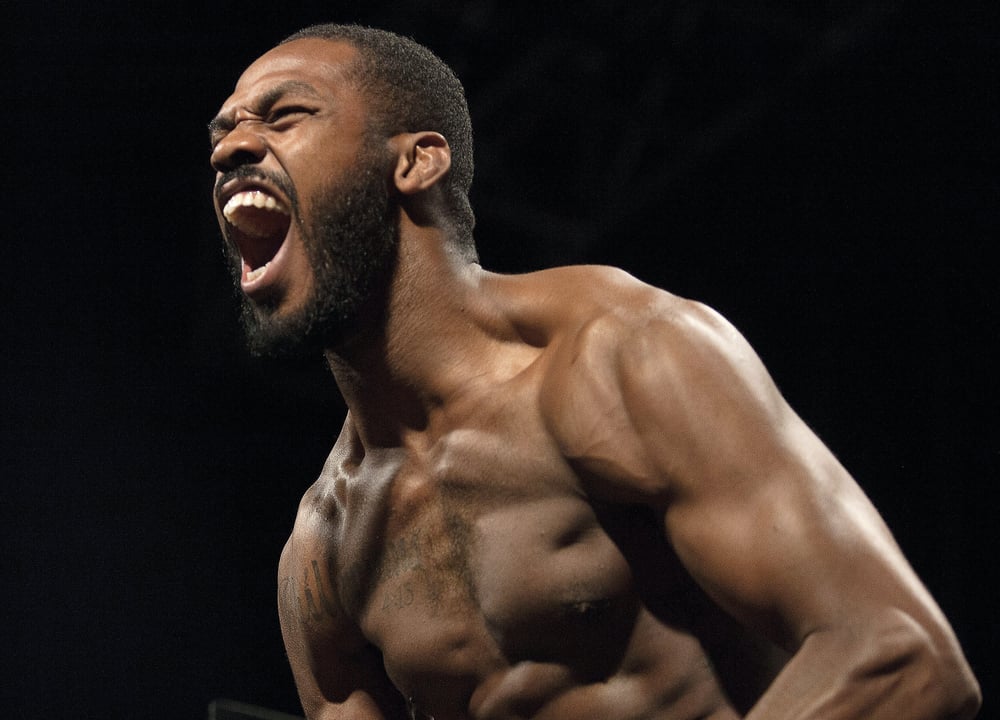
REVOLUTIONARY TACTICS AND MOVES
From his very first foray in the UFC, it was clear Jones was no ordinary brawler. Sure, plenty of fighters had thrown spinning elbows and flashy kicks, but Jones didn’t just execute his versions thereof - he landed them with murderous intent and geometric precision. Some strikes are now seemingly pedestrian by today’s metrics, but Jones was one of the first to put them into action on MMA’s biggest stage. Front of center was the spinning back elbow that rattled Stephan Bonnar at UFC 94. It became a statement that told the fans he was here for their pleasure. Jones knew MMA was entertainment, so he created victories by way of highlights reels long before there were even such things as reels. Most of the fighters who had preceded Jones came to win, and it didn’t matter how ugly it looked, but Jones took the cake and put the glitter, gold leaf, and cherry on top. He is a pioneer behind a series of vicious innovations that would eventually become standard operating procedures in MMA while making the visual aspects more appealing to the masses. Inspired by Wing Chun, his infamous oblique kick was another stroke of genius (or villainy, depending on who you ask). Some critics may call it poor sportsmanship. The fighters on the receiving end of a kick designed to bend your knee backward call it painful. But Jones calls it a legal tactic, and he’s right.
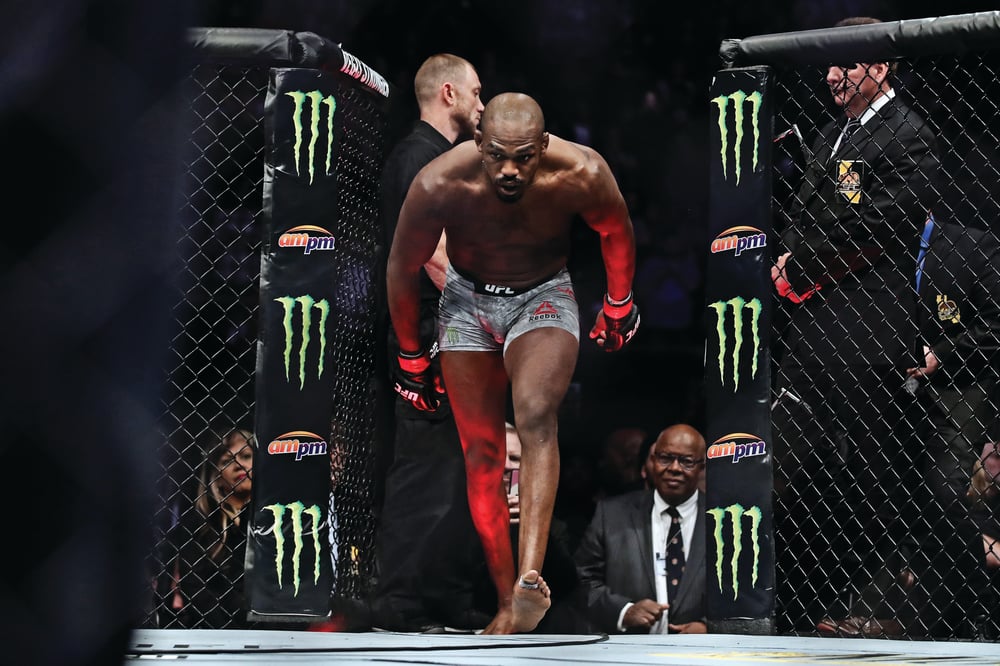
“It’s a very controversial move, but if someone’s trying to give you brain damage, we believe that it’s an even trade-off to give them a little limp for the rest of their lives, so try out it guys,” Jones once quipped, embodying his pragmatic, win-at-all-costs mindset. In truth, the oblique kick is a strategic disrupter that operates in the sports grey area by breaking down an opponent’s mobility. It’s not a KO creator but big-picture stuff that proves that Jones was one of the first to approach bouts as a chess match that punishes you for even the slightest mistake.
“When I fight, it’s methodical and relaxed,” he told Fighters Only. “I think Bruce Lee said it best: ‘He extend, I retract.’ I want to use my knowledge, and all my techniques, never fight out of anger, or say, ‘I’m gonna rip his head off’. It’s all about breaking opponents down.”
It’s not just the damage Jones inflicts—it’s how he adapts mid-fight, bringing the unexpected to turn positions of vulnerability into opportunities for ascendance.
THE FIGHTER'S JOURNEY
Adapting is one thing. Evolution is something more specific to an end goal that manifests long-term advantages. Jon Jones has done both at a level rarely seen in MMA. As a light heavyweight, his natural gifts, such as height, reach, and agility, made him an impossible puzzle for any shorter or stockier opponent. With his fight career maturing, he weaponized his reach to dictate the terms of engagement. There are moments where many believed this went too far, where he notoriously extends his fingers to find the limits of that reach, only to eye-poke the likes of Rampage Jackson, Rashard Evans, and Daniel Cormier, to name a few. Again, this lies in the grey area he’s so comfortable to inhabit. Do it once, and it’s an accident. Do it repeatedly, and it becomes a tactic against which opponents have to defend. It’s this type of adaptability in attack that has defined his reign. Whether he’s facing a wrestler or striker, Jones doesn’t react—he rewrites the script in real time.
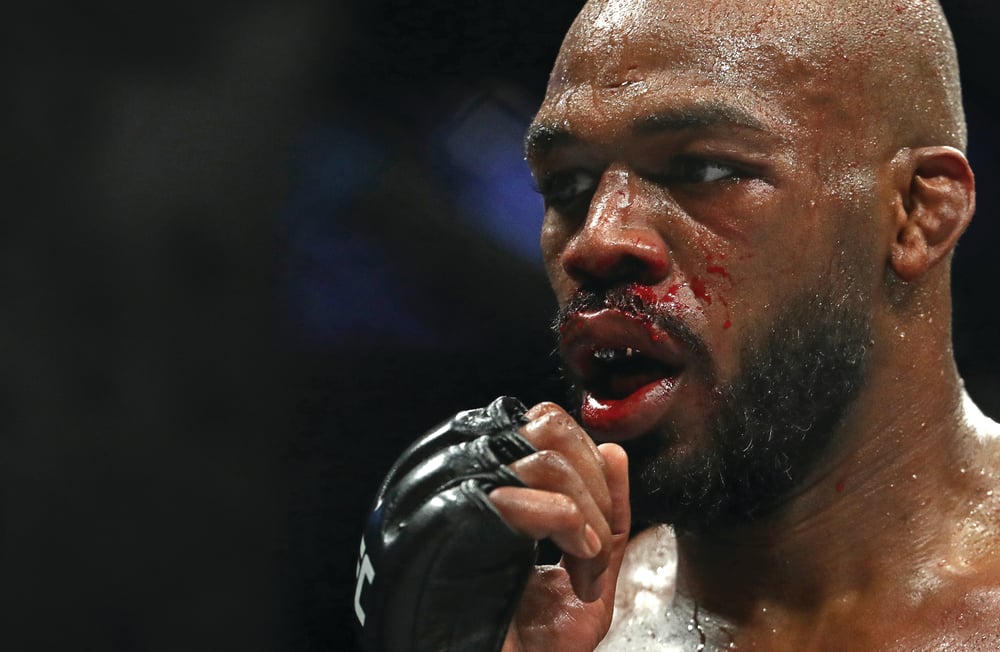
Who can forget the 2013 slugfest with Alexander Gustafsson at UFC 165? Many saw this as the first fight to test Jones and force him to dig deeper than ever before. Fans were treated to a war of attrition where both men could no longer rest on the laurels of their natural athletic gifts. The result? Jones proved he could win against a worthy opponent and force the result. Equally, transitioning to heavyweight wasn’t just about packing on mass. The process was a complete overhaul of his game and mindset. Jones’s heavyweight debut against Ciryl Gane in March 2023 saw a master painter approach the blank canvas with fresh inspiration. Within minutes, Jones had Gane on the ground and secured a guillotine choke. It was an efficient win that left the stadium’s applause roaring like electric cats fighting in a slaughterhouse. Jones didn’t just gain weight; he earned real power, which, combined with his work ethic, turned Jones from a light heavyweight virtuoso into a heavyweight force thanks to his support network.
“I think through faith, belief, says Jones. “Aligning yourself with the right people. That’s it. I do feel like I’m getting better. The reason I feel that way is because of my team, the people around me. I feel I’m becoming a better leader. I’m trying to bring out the best of the guys around me. The more I care and, the more they care and bring out the best in me. I’m truly blessed to be with people who truly care about me. I’ve accumulated possibly the best mixed martial arts team that’s ever existed.”
His evolution isn’t just a physical transformation - it’s a testament to his obsessive pursuit of greatness using all the resources available.
THE ANATOMY OF GREATNESS
Standing 6'4 with an 84.5-inch reach, Jones’s physique isn’t just impressive—it’s a cheat code. It’s something that other fighters like bantamweight Sean O’Malley, who stands at 5’11, have since replicated with much success. But the reach alone isn’t what makes him great; it’s how he uses it as a range finder and manipulates the fight’s rhythm. Former opponent Chael Sonnen summed it up perfectly: “His jab isn’t meant to hurt you; it’s meant to make you rethink your entire game plan. Before you know it, he’s got you playing his game.”

Jones’s wrestling, often underestimated due to his striking prowess, is another pillar of greatness. This is something he proved against Daniel Cormier, where his grappling was on point. He out-wrestled him in the clinch and took away Cormier’s most potent weapon. Jon’s wrestling is proactive, and many believe that if there were ever a super fight against Alex Pereira, that would be the difference.
“If he fights Jon Jones, I think there’s a chance it’s over in, like, two and a half minutes,” said analyst Ben Askren. “Look what Jon did to Ciryl Gane. Jon is a large man. He’s a high-level wrestler. He’s got great grappling skills. Yeah, I think there’s a possibility of that, for sure.”
Ground-and-pound is where Jones truly separates himself from the pack. His long limbs allow him to generate massive leverage from top control, making every strike feel like it’s delivered with a sledgehammer.
THE MIND OF A CHAMPION
Jones’s physical dominance is clear, but his pre-fight psychological strategy is just as lethal. Social media is another one of the weapons he employs to compete against his opponents the moment the fight is announced. Speaking on Ariel Helwani’s MMA show, Dominick Reyes explained what it’s like to ensure Jones’s brand of psychological warfare before a fight.
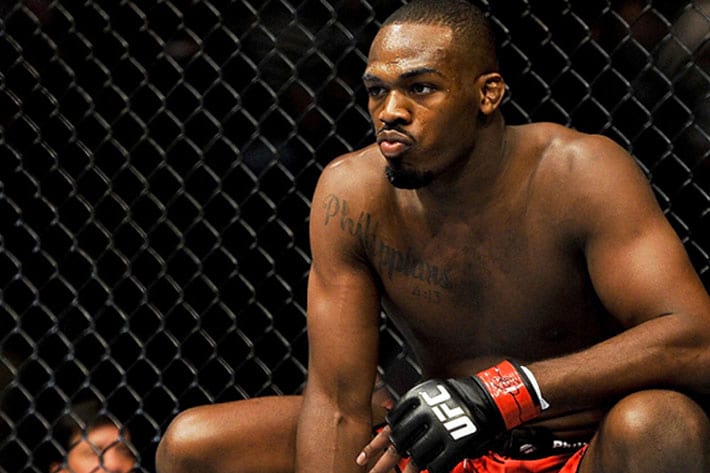
“He studied every aspect of my entire life," Reyes said. "He thinks he knows me. That's why I laugh, because he honestly believes he knows me as a man, as a human being. He has no idea. It's just crazy. He just tries to constantly belittle his opponents. He tries to make them feel lesser than him, by leaps and bounds. His whole thing is you're lesser than me. I'm better than you. You're nothing. I'm everything. I'm Jon Jones. You're nothing."
Jones tweets regularly, and if you read between the lines, you will see that he clearly has a manipulative strategy in play before every fight. You can read between the lines where he almost openly admits this tactic, where he posts comments such as this on his X account.
“I’m not a historian of war or anything, but I have learned a thing or two in my day. A big part of combat strategy is timing and deception. To make a long story short, if your opponent appears weak, prepare even harder. Complacency is your greatest enemy to a fighter like myself.”
One thing worth noting is that he always keeps himself in a position of authority.
After Francis Ngannou’s first-round knockout win in the PFL, Jones tweeted, "What an amazing job Francis did tonight, displayed a complete MMA game. Great kicks, great takedowns. It feels good to see him shine. Wow congratulations Champ, I see you."
Was it genuine praise, or was it a subtle cue that Jones is always watching, ready to remind the world who the king really is? It definitely worked because Ngannou responded with the class, which may have resolved an ongoing debate.
“I don’t know if Jon Jones is ducking Tom Aspinall,” said Ngannou. “I think Jon Jones would be the best to answer this question. I think Jon Jones does whatever he wants and fights whoever he wants. He is in the position to claim that.”
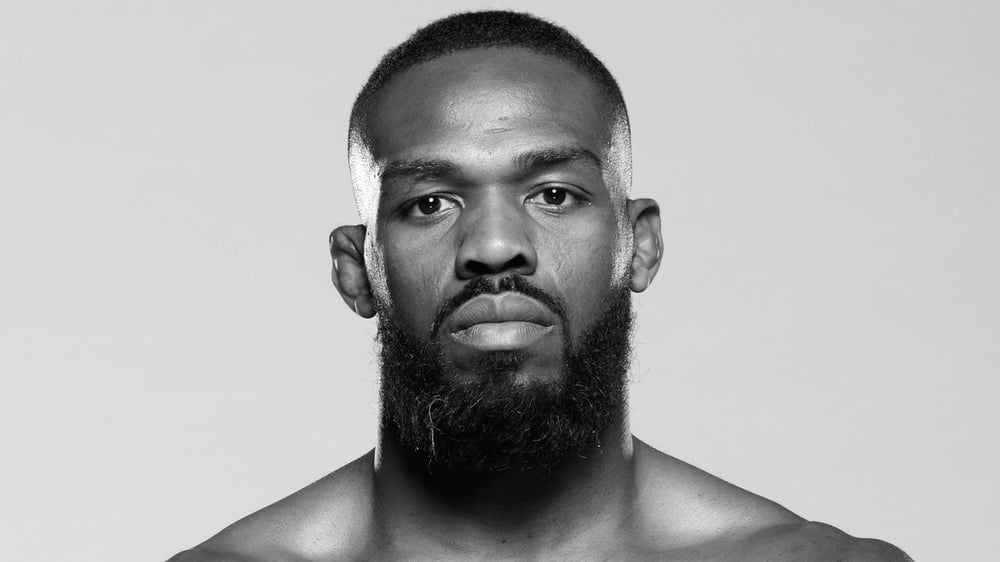
If you look at Jones’s online behavior, you’ll see it’s more than just bravado. It’s about projecting dominance across the most dominant division. His social media presence engages with fans to control the narrative and keep all potential opponents on edge. Research at the University of Texas at Austin found that people who share knowledge-based articles on social media tend to believe they’re experts in them, which helps reaffirm their identity. Jones rarely does this because he projects himself as the ultimate authority. That’s become a consistent psychological jab that keeps his rivals second-guessing themselves. Should he fight Aspinall, Ngannou, or Pereira to prove his legacy? Only he can decide, and it is a decision he’s earned the right to make, considering he’s already teased walking away from the sport after this next fight.
THE BIG QUESTIONS
As we near the end of his career, there is a lot of talk about legacy, and two names enter this conversation: Francis Ngannou and Tom Aspinall. These are the fights that get fans frothing to the point where the narrative gets negative. After his win over Renan Ferreira, Ngannou’s respectful response to Jones’s tweet only added fuel to the fire. With Saudi Arabia’s General Entertainment Authority keen to make the cross-promotional clash happen, the stakes have never been higher. A Jones-Ngannou fight could redefine what’s possible in MMA—an event that transcends organizational politics and brings two real giants together for what could be the ultimate legacy fight. That said, Jon Jones’s legacy isn’t just about titles or records; it’s about changing the game because he set new benchmarks for what’s possible in MMA. As he prepares to battle, Jones defends a career built on tactical brilliance, physical dominance, and an unmatched will to win. Whether he walks away after UFC 309 or continues to face one more opponent, his influence on the forever landscape of MMA is here to stay. He’s continuously reinvented MMA one brush stroke at a time, and the big question is why that’s even being questioned in the first place.
